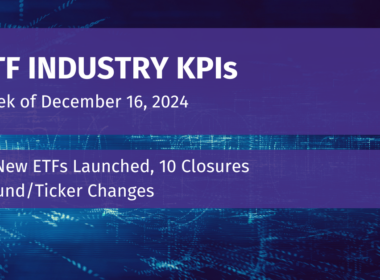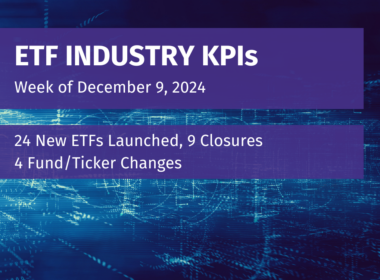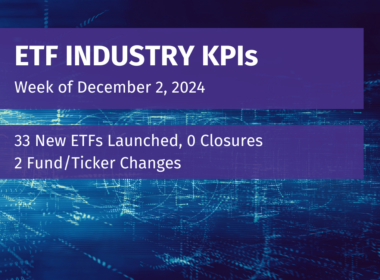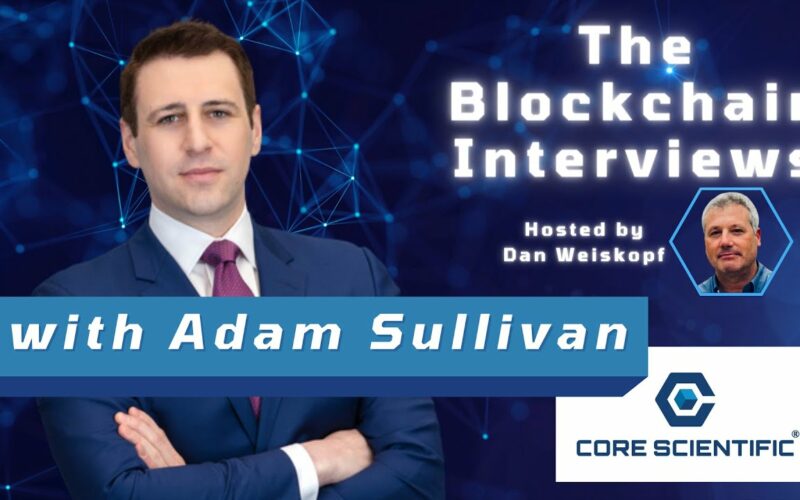In the realm of personal finance, the concept of Financial Independence, Retire Early (FIRE) has been gaining momentum. This strategy emphasizes achieving financial freedom much earlier than traditional retirement ages, allowing individuals to pursue their interests without the need for regular employment.
Understanding FIRE
The FIRE movement is built on the dual pillars of extreme savings and investment. Practitioners often save more than half of their income and invest in a variety of assets to build wealth rapidly. The goal is to accumulate assets sufficient to cover living expenses indefinitely, allowing them to “retire” decades earlier than the norm.
Risks of FIRE
The biggest risks once financial independence has been achieved is drawdown and loss of purchasing power. We will cover a number of offerings designed to minimize drawdown, maximize purchasing power, and increase yield generation on a portfolio to help achieve and maintain financial independence.
Risk Parity, Managed Futures, and the Hedge Fund Replication as a Base of FIRE
Risk parity strategies aim to allocate risk evenly across various asset classes, reducing dependency on any single market. This approach can provide smoother portfolio performance, making it suitable for long-term financial planning. Ultra Risk Parity ETF (UPAR) offers leveraged exposure to Risk Parity. Managed futures funds use futures contracts to capitalize on momentum trends and patterns in various asset classes, including commodities and financial instruments. They can act as a hedge against downturns in traditional equity and bond markets. Returned Stacked Bonds & Managed Futures (RSBT) offers a exposure to both managed futures and fixed income. Hedge fund replication strategies mimic the risk and return profiles of successful hedge funds. Unlimited HFND Multi-Strategy Return Tracker (HFND), for instance, aims to provide hedge fund-like returns using more liquid, transparent investments, often at a lower cost.
Inflation Protection
Next, we will construct an inflation protection sleeve, although both risk parity, managed futures, and hedge fund replication often come with varying exposure to inflation, a dedicated bucket on top may help hedge purchasing power of our FIRE portfolio.
With inflation as a persistent concern, ETFs like such as Amplify Inflation Fighter (IWIN), Folio Beyond Alternative Income and Interest Rate Hedge (RISR), and Ionic Inflation Protection (CPII) seek to hedge purchasing power through direct commodity and commodity equity exposure, as well as TIPS, MBS interest only strips and inflation swaps that collectively maintain a high level of distribution and protect purchasing power.
Now that we have a diversified inflation protected portfolio, we can focus on increasing the level of distribution through new innovative covered call ETFs selling daily or weekly calls on broad indexes, individual stocks, and even bitcoin futures.
Leveraging Covered Call Dividend ETFs
In the journey towards Financial Independence, Retire Early (FIRE), strategic investment choices play a crucial role. Covered call dividend ETFs that sell options on a weekly or daily basis, such as YMAG, JEPY, IWMY, and YBIT, offer a dynamic approach to income generation. When paired with diversified asset classes such as risk parity, inflation protection, managed futures, and hedge fund replication, these strategies can potentially enhance portfolio returns while managing risks.
Enhanced Income with Covered Call Dividend ETFs
Covered call dividend ETFs like YieldMax Magnificent 7 (YMAG), Defiance S&P 500 Enhanced Options Income (JEPY), Defiance R2000 Enhanced Options Income (IWMY), and YieldMax Bitcoin Option Income (YBIT) engage in selling call options on the underlying securities at a high frequency (weekly or daily). This approach seeks to generate regular option premium income in addition to dividends, providing a consistent income stream.
Deployment of Additional Capital
While in accumulation mode deploying capital can help rebalance the portfolio without incurring many sales, maximizing tax efficiency. The effectiveness of a FIRE strategy depends on frequent rebalancing and tax efficiency by allocating across taxable and tax free accounts.
Conclusion
For FIRE enthusiasts, the combination of high-frequency covered call dividend ETFs and diversified asset classes offers a robust framework for building a resilient and growth-oriented portfolio. This sophisticated blend not only aims for high income generation through options but also manages risks through diversification across different investment strategies. With careful planning and management, we believe these tools can significantly contribute to achieving and maintaining financial independence at an early age.
Definitions
Treasury Inflation-Protected Securities (TIPS): TIPS are a type of U.S. Treasury security issued by the government. They are indexed to the rate of inflation in order to protect investors from a decline in their purchasing power.
MBS: Mortgage-backed securities are fixed-income instruments that represent an interest in a pool of mortgages.
Inflation Swaps: A contract that is used to transfer inflation risk from one party to another through an exchange of fixed cash flows – one party transfers the risk to another party in exchange for a fixed payment.
SPAC: A special purpose acquisition company (SPAC) is a public company that raises money through an initial public offering (IPO) to acquire or merge with a private company, making it public without going through an IPO.
Important Information
All investments involve risk, including possible loss of principal.
Carefully consider the Fund’s investment objectives, risks, charges, and expenses before investing. Read each of the prospectus carefully before investing. A prospectus for each fund may be obtained by clicking the below:
UPAR, CPII, RSBT, HFND, RISR, IWIN, YMAG, JEPY, IWMY, YBIT
UPAR
As with all ETFs, Fund shares may be bought and sold in the secondary market at market prices. The market price normally should approximate the Fund’s net asset value per share (NAV), but the market price sometimes may be higher or lower than the NAV. The Fund is new with a limited operating history. There are a limited number of financial institutions authorized to buy and sell shares directly with the Fund; and there may be a limited number of other liquidity providers in the marketplace. There is no assurance that Fund shares will trade at any volume, or at all, on any stock exchange. Low trading activity may result in shares trading at a material discount to NAV.
The Fund’s use of reverse repurchase agreements is considered a form of borrowing money. Borrowing money to finance purchases of securities that exceed the Fund’s net assets creates leverage risk, which may magnify changes to the Fund’s net asset value and its returns.
The Fund bears the added price volatility risk of the securities purchased. Borrowing money will cost the Fund interest expense and other fees, which may reduce its returns.
The Fund’s exposure to investments in physical commodities may fluctuate rapidly and subjects the Fund to greater volatility than investments in traditional securities, such as stocks and bonds. Interest payments on TIPS are unpredictable and will fluctuate as the principal and corresponding interest payments are adjusted for inflation. Equity securities, such as common stocks, are subject to market, economic and business risks that may cause their prices to fluctuate. The Fund invests in foreign and emerging market securities which involves certain risks such as currency volatility, political and social instability and reduced market liquidity. The Fund may invest in securities issued by the U.S. government or its agencies or instrumentalities. There can be no guarantee that the United States will be able to meet its payment obligations with respect to such securities.
The UPAR Ultra Risk Parity ETF seeks to enhance returns through the use of leverage. Leverage is investment exposure that exceeds the initial amount invested. Derivatives and other transactions, such as reverse repurchase agreements, that give rise to leverage may cause the Fund’s performance to be more volatile than if the Fund had not been leveraged.
Diversification does not ensure a profit or protect against loss in declining markets.
CPII
Investments involve risk. Principal loss is possible. Cayman Subsidiary Risk. By investing in the Subsidiary, the Fund is indirectly exposed to the risks associated with the Subsidiary’s investments. Counterparty Risk. The risk of loss to the Fund for swaps that are entered into on a net basis depends on which party is obligated to pay the net amount to the other party. Credit Risk. The Fund’s investments are subject to the risk that issuers and/or counterparties will fail to make payments when due or default completely. Cybersecurity Risk. With the increased use of technologies such as the Internet to conduct business, the Fund is susceptible to operational, information security, and related risks. Derivatives Risk. The Fund’s derivative investments have risks, including the imperfect correlation between the value of such instruments and the underlying assets or index; the loss of principal, including the potential loss of amounts greater than the initial amount invested in the derivative instrument; the possible default of the other party to the transaction; and illiquidity of the derivative investments. Interest Rate Risk. Generally, the value of fixed income securities (not including TIPS) will change inversely with changes in interest rates. New Fund Risk. The Fund is a recently organized management investment company with no operating history. Non-Diversification Risk. Because the Fund is “non-diversified,” it may invest a greater percentage of its assets in the securities of a single issuer or a smaller number of issuers than if it was a diversified fund. Swap Risk. Swaps are entered into primarily with major global financial institutions for a specified periods. The swaps in which the Fund invests are generally traded in the over-the-counter market, which generally has less transparency than exchange-traded derivatives instruments. TIPS Risk. Interest payments on TIPS are unpredictable and will fluctuate as the principal and corresponding interest payments are adjusted for inflation. U.S. Treasury Securities Risk. The Fund will invest in U.S. Treasury securities issued or guaranteed by the U.S. Treasury. U.S. government securities are subject to market risk, interest rate risk and credit risk.
RSBT
Derivatives Risk. Derivatives are instruments, such as futures contracts, whose value is derived from that of other assets, rates, or indices. The use of derivatives for non-hedging purposes may be considered to carry more risk than other types of investments. Cayman Subsidiary Risk. By investing in the Fund’s Cayman Subsidiary, the Fund is indirectly exposed to the risks associated with the Subsidiary’s investments. The futures contracts and other investments held by the Subsidiary are subject to the same economic risks that apply to similar investments if held directly by the Fund. The Subsidiary is not registered under the 1940 Act, and, unless otherwise noted in the Fund’s Prospectus, is not subject to all the investor protections of the 1940 Act. Bond Risks. The Fund will be subject to bond and fixed income risks through its investments in U.S. Treasury securities, broad-based bond ETFs, and investments in U.S. Treasury and fixed income futures contracts. Changes in interest rates generally will cause the value of fixed income and bond instruments held by Fund (or underlying ETFs) to vary inversely to such changes. Commodity Risk. Investing in physical commodities is speculative and can be extremely volatile. Commodity-Linked Derivatives Tax Risk. The tax treatment of commodity-linked derivative instruments may be adversely affected by changes in legislation, regulations, or other legally binding authority. As a registered investment company (RIC), the Fund must derive at least 90% of its gross income each taxable year from certain qualifying sources of income under the Internal Revenue Code. If, as a result of any adverse future legislation, U.S. Treasury regulations, and/or guidance issued by the Internal Revenue Service, the income of the Fund from certain commodity-linked derivatives, including income from the Fund’s investments in the Subsidiary, were treated as non-qualifying income, the Fund may fail to qualify as RIC and/or be subject to federal income tax at the Fund level. The uncertainty surrounding the treatment of certain derivative instruments under the qualification tests for a RIC may limit the Fund’s use of such derivative instruments. Commodity Pool Regulatory Risk. The Fund’s investment exposure to futures instruments will cause it to be deemed to be a commodity pool, thereby subjecting the Fund to regulation under the Commodity Exchange Act and the Commodity Futures Trading Commission rules. Because the Fund is subject to additional laws, regulations, and enforcement policies, it may have increased compliance costs which may affect the operations and performance of the Fund
Currency Risk: Currency risk is the risk that changes in currency exchange rates will negatively affect securities denominated in, and/or receiving revenues in, foreign currencies. The liquidity and trading value of foreign currencies could be affected by global economic factors, such as inflation, interest rate levels, and trade balances among countries, as well as the actions of sovereign governments and central banks. Foreign and Emerging Markets Risk. Foreign and emerging market investing involves currency, political and economic risk. Leverage Risk: As part of the Fund’s principal investment strategy, the Fund will make investments in futures contracts to gain long and short exposure across four major asset classes (commodities, currencies, fixed income, and equities). These derivative instruments provide the economic effect of financial leverage by creating additional investment exposure to the underlying instrument, as well as the potential for greater loss. Non-Diversification Risk. The Fund is nondiversified, meaning that it is permitted to invest a larger percentage of its assets in fewer issuers than diversified funds. Underlying ETFs Risk. The Fund will incur higher and duplicative expenses because it invests in bond ETFs. The Fund may also suffer losses due to the investment practices of the underlying bond ETFs. New Fund Risk. The Fund is a recently organized with no operating history. As a result, prospective investors do not have a track record or history on which to base their investment decisions.
HFND
Underlying ETFs Risks. The Fund will incur higher and duplicative expenses because it invests in Underlying ETFs. There is also the risk that the Fund may suffer losses due to the investment practices of the Underlying ETFs. The Fund will be subject to substantially the same risks as those associated with the direct ownership of securities held by the Underlying ETFs.
Derivatives Risk. The Fund’s or an Underlying ETF’s derivative investments have risks, including the imperfect correlation between the value of such instruments and the underlying assets or index; the loss of principal, including the potential loss of amounts greater than the initial amount invested in the derivative instrument; the possible default of the other party to the transaction; and illiquidity of the derivative investments.
Fixed Income Securities Risk. The Fund may invest in Underlying ETFs that invest in fixed income securities. The prices of fixed income securities may be affected by changes in interest rates, the creditworthiness and financial strength of the issuer and other factors. An increase in prevailing interest rates typically causes the value of existing fixed income securities to fall and often has a greater impact on longer-duration and/or higher quality fixed income securities.
Foreign Securities Risk. Foreign securities held by Underlying ETFs in which the Fund invests involve certain risks not involved in domestic investments and may experience more rapid and extreme changes in value than investments in securities of U.S. companies.
Short Selling Risk. The Fund may make short sales of securities of Underlying ETFs, which involves selling a security it does not own in anticipation that the price of the security will decline. Short sales may involve substantial risk and leverage.
New Fund Risk. The Fund is a recently organized management investment company with no operating history. As a result, prospective investors do not have a track record or history on which to base their investment decisions.
RISR
Investments involve risk. Principal loss is possible. Unlike mutual funds, ETFs may trade at a premium or discount to their net asset value. The fund is new and has limited operating history to judge.
Fund Risks – The value of MBS IOs is more volatile than other types of mortgage-related securities. They are very sensitive not only to declining interest rates, but also to the rate of prepayments. MBS IOs involve the risk that borrowers may default on their mortgage obligations or the guarantees underlying the mortgage-backed securities will default or otherwise fail and that, during periods of falling interest rates, mortgage-backed securities will be called or prepaid, which may result in the Fund having to reinvest proceeds in other investments at a lower interest rate. The Fund’s derivative investments have risks, including the imperfect correlation between the value of such instruments and the underlying assets or index; the loss of principal, including the potential loss of amounts greater than the initial amount invested in the derivative instrument. The value of the Fund’s investments in fixed income securities (not including MBS IOs) will fluctuate with changes in interest rates. Typically, a rise in interest rates causes a decline in the value of fixed income securities owned indirectly by the Fund. Please see the prospectus for a complete description of principal risks.
IWIN
Investing involves risk, including the possible loss of principal. The Fund is subject to management risk because it is an actively managed. The fund is considered non-diversified, and may face more risks than if it were diversified broadly over numerous industries or sectors.
The value of the Shares will fluctuate with changes in the value of the equity securities in which it invests. The successful use of futures contracts draws upon the adviser’s skill and experience with respect to such instruments and are subject to special risk considerations. The market for bitcoin futures may be less developed, less liquid and more volatile than more established futures markets. The Fund expects to have market exposure to cryptocurrencies such as bitcoin. Bitcoin and its derivatives are a relatively new financial innovation, and the market for these products is subject to rapid price swings, changes, increases in margin requirements, trading halts, and other uncertainties. Commodity prices can have significant volatility, and exposure to commodities can cause the value of a Fund’s shares to decline or fluctuate in a rapid and unpredictable manner.
Investments linked to the prices of commodities may be considered speculative. Significant investment exposure to commodities may subject the Fund to greater volatility than investments in traditional securities. Construction and homebuilding companies may be significantly affected by changes in demand for their specific products or services, government spending, zoning laws, general economic conditions, commodity prices, consumer confidence and spending, taxation, demographic patterns, real estate values, labor relations and government regulations. The Fund is susceptible to operational, price, and varied other risks associated with breaches in cybersecurity. The Fund is subject to certain risks associated with companies involved in mining. The Fund may invest in Commodity-Linked Instruments, including ETFs and shares of other pooled investment vehicles. The Fund may obtain exposure to bitcoin through the Grayscale Bitcoin Trust (“GBTC”). GBTC is a private investment fund that is not regulated under the 1940 Act.
The Fund’s investments in securities linked to real assets, such as precious metals, commodities, land, equipment and natural resources, involve significant risks, including financial, operating, and competitive risks. Investments in REITs are subject to the risks associated with investing in real estate. Adverse economic, business or political developments affecting real estate could have a major effect on the value of the Fund’s investments in REITs. SPACs have no operating history or ongoing business other than seeking acquisitions. Therefore, the value of their securities is particularly dependent on the ability of the entity’s management to identify and complete a profitable acquisition.
YMAG & YBIT
Call Writing Strategy Risk: The continuous application of each Underlying YieldMax™ ETF’s call writing strategy impacts its ability to participate in positive price returns of its Underlying Security. This affects returns during the term of sold call options and over longer time frames. An Underlying YieldMax™ ETF’s participation in its Underlying Security’s positive price returns and its own returns will depend not only on the Underlying Security’s price but also on the path the Underlying Security’s price takes over time.
Single Issuer Risk: Each Underlying YieldMax™ ETF, focusing on an individual security (Underlying Security), may experience more volatility compared to traditional pooled investments or the market generally due to issuer-specific attributes.
High Portfolio Turnover Risk: Each Underlying YieldMax™ ETF may actively and frequently trade all or a significant portion of the Underlying YieldMax™ ETF’s holdings.
New Fund Risk: The Fund is a recently organized management investment company with no operating history. Prospective investors do not have a track record or history on which to base their investment decisions.
Liquidity Risk: Some securities held by the Underlying YieldMax™ ETFs, including options contracts, may be difficult to sell or be illiquid, particularly during times of market turmoil. Put Writing Strategy Risk. The path dependency (i.e., the continued use) of the Fund’s put writing strategy will impact the extent that the Fund participates in the positive price returns of the Index and, in turn, the Fund’s returns, both during the term of the sold put options and over longer time periods.
Distribution Risk: Each Underlying YieldMax™ ETF aims to provide monthly income, but there is no guarantee of distribution in any given month. Monthly distributions may consist of capital returns, potentially reducing each Underlying YieldMax™ ETF’s NAV and trading price over time. This could lead to significant losses for investors, especially as returns exclude dividends paid by the Underlying Security, resulting in lesser income compared to a direct investment in the Underlying Security.
The YieldMax Bitcoin Option Income Strategy ETF does not invest directly in Bitcoin or any other digital assets, the Fund does not invest directly in derivatives that track the performance of Bitcoin or any other digital assets, the Fund does not invest in or seek direct exposure to the current “spot” or cash price of Bitoin, and that investors seeking direct exposure to the price of Bitcoin should consider an investment other than the Fund.
Underlying Bitcoin ETP Risks: Investing in an Underlying ETP that focuses on Bitcoin, either through direct holdings or indirectly via derivatives like futures contracts, carries significant risks.
Bitcoin Investment Risk: The Fund’s indirect investment in Bitcoin, through holdings in one or more Underlying ETPs, exposes it to the unique risks of this emerging innovation.
Digital Assets Risk: Digital assets like Bitcoin, designed as mediums of exchange, are still an emerging asset class. They operate independently of any central authority or government backing and are subject to regulatory changes and extreme price volatility.
Digital Asset Markets Risk: The digital asset market, particularly Bitcoin, has experienced considerable volatility, leading to market disruptions and erosion of confidence among market participants.
Blockchain Technology Risk: Blockchain technology, which underpins Bitcoin and other digital assets, is relatively new, and many of its applications are untested.
Single Underlying ETP Risks. As of the date of this Prospectus, there is only a single eligible Underlying ETP, namely, the Bitcoin Strategy ETF (BITO).
YBIT is not suitable for all investors. An investment in YBIT is subject to a high degree of risk, has the potential for significant volatility, and could result in significant or complete loss of investment. YBIT is not an investment company registered under the Investment Company Act of 1940 (the “1940 Act”). As a result, shareholders of BITB do not have the protections associated with ownership of shares in an investment company registered under the 1940 Act.
JEPY & IWMY
Indirect Investment Risk. The Index is not affiliated with the Trust, the Fund, the Adviser, the Sub-Adviser, or their respective affiliates and is not involved with this offering in any way. Investors in the Fund will not have the right to receive dividends or other distributions or any other rights with respect to the companies that comprise the Index but will be subject to declines in the performance of the Index.
Derivatives Risk. Derivatives are financial instruments that derive value from the underlying reference asset or assets, such as stocks, bonds, or funds (including ETFs), interest rates or indexes. The Fund’s investments in derivatives may pose risks in addition to, and greater than, those associated with directly investing in securities or other ordinary investments, including risk related to the market, imperfect correlation with underlying investments, higher price volatility, lack of availability, counterparty risk, liquidity, valuation and legal restrictions.
Price Participation Risk. The Fund employs an investment strategy that includes the sale of in-the-money put option contracts, which limits the degree to which the Fund will participate in increases in value experienced by the Index over the Call Period (typically, one day, but may range up to one week). This means that if the Index experiences an increase in value above the strike price of the sold put options during a Call Period, the Fund will likely not experience that increase to the same extent and may significantly underperform the Index over the Call Period. Additionally, because the Fund is limited in the degree to which it will participate in increases in value experienced by the Index over each Call Period, but has full exposure to any decreases in value experienced by the Index over the Call Period, the NAV of the Fund may decrease over any given time period.
Distribution Risk. As part of the Fund’s investment objective, the Fund seeks to provide current monthly income. There is no assurance that the Fund will make a distribution in any given month. If the Fund does make distributions, the amounts of such distributions will likely vary greatly from one distribution to the next.
High Portfolio Turnover Risk. The Fund may actively and frequently trade all or a significant portion of the Fund’s holdings. A high portfolio turnover rate increases transaction costs, which may increase the Fund’s expenses.
Liquidity Risk. Some securities held by the Fund, including options contracts, may be difficult to sell or be illiquid, particularly during times of market turmoil. This risk is greater for the Fund as it will hold options contracts on a single security, and not a broader range of options contracts.
New Fund Risk. The Fund is a recently organized management investment company with no operating history. As a result, prospective investors do not have a track record or history on which to base their investment decisions.
IWMY- Put Writing Strategy Risk. The path dependency (i.e., the continued use) of the Fund’s put writing strategy will impact the extent that the Fund participates in the positive price returns of the Index and, in turn, the Fund’s returns, both during the term of the sold put options and over longer time periods.
The author believes these funds align with the thesis of FIRE investing.
The material provided here is for informational purposes only and should not be considered an individualized recommendation or personalized investment advice. The investment strategies mentioned here may not be suitable for everyone. Each investor needs to review an investment strategy for his or her own particular situation before making any investment decision.
All expressions of opinion are subject to change without notice in reaction to shifting market conditions. Data contained herein from third-party providers is obtained from what are considered reliable sources. However, its accuracy, completeness, or reliability cannot be guaranteed.
Examples provided are for illustrative purposes only and not intended to be reflective of results you can expect to achieve. References to other securities is not an offer to buy or sell.
The value of investments and the income from them can go down as well as up and investors may not get back the amounts originally invested, and can be affected by changes in interest rates, exchange rates, general market conditions, political, social, and economic developments, and other variable factors. Investment involves risks including but not limited to, possible delays in payments and loss of income or capital. Neither Tidal nor any of its affiliates guarantees any rate of return or the return of capital invested. This commentary material is available for informational purposes only and nothing herein constitutes an offer to sell or a solicitation of an offer to buy any security and nothing herein should be construed as such. All investment strategies and investments involve risk of loss, including the possible loss of all amounts invested, and nothing herein should be construed as a guarantee of any specific outcome or profit. While we have gathered the information presented herein from sources that we believe to be reliable, we cannot guarantee the accuracy or completeness of the information presented and the information presented should not be relied upon as such. Any opinions expressed herein are our opinions and are current only as of the date of distribution, and are subject to change without notice. We disclaim any obligation to provide revised opinions in the event of changed circumstances.
The information in this material is confidential and proprietary and may not be used other than by the intended user. Neither Tidal nor its affiliates or any of their officers or employees of Tidal accepts any liability whatsoever for any loss arising from any use of this material or its contents. This material may not be reproduced, distributed, or published without prior written permission from Tidal. Distribution of this material may be restricted in certain jurisdictions. Any persons coming into possession of this material should seek advice for details of and observe such restrictions (if any).
All funds mentioned are distributed by Foreside Fund Services, LLC. Foreside is not affiliated with Tidal.












